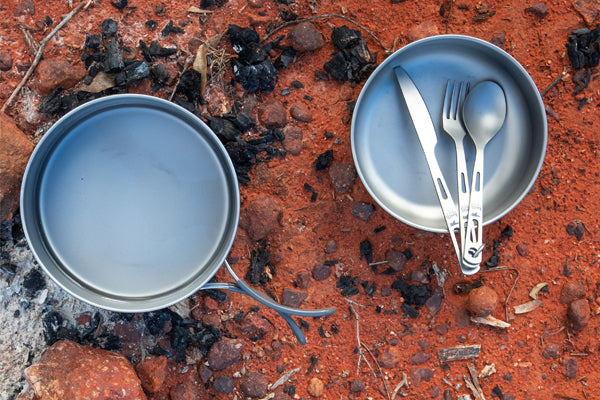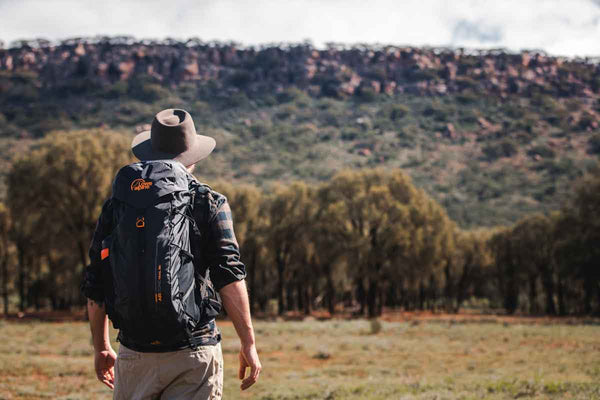
Stoves & Cookware Guide
There are essentially only three types of stove systems that are suitable for regular outdoor use: compact gas cannister ("cannister stoves), open-spirit burners (such as Trangia) and pressurised lightweight liquid fuel stoves ("liquid fuel" or "white gas" stoves). All of these stove types are great for outdoor use as they are easily carried and field-maintainable.
When purchasing a stove it can be difficult to choose between these three systems. To help, we suggest you first consider the fuel availability where you plan to go adventuring, the proposed duration of stove use, and the temperature and altitude at which it will be used. Only after these points have been considered should you start thinking about price and weight.
Cannister Stoves
Small, simple to use, clean burning and lightweight: it is no wonder that gas canister stoves are very popular. Commonly these stoves burn isobutane or a propane/butane mix. Isobutante has a higher burning quality and as such will cost a little more; however it also does much better in cold conditions than straight butane or propane and as such should be your first choice.
It is important to note that gas canisters are not refillable and outside major towns or cities they can be difficult to purchase. Therefore, it is always advisable to research restocking opportunities in advance, especially when travelling internationally. IMPORTANT: Gas cannisters can never be taken on a plane. Never, ever! For extended trips weight and bulk also become an issue as a number of canisters will need to be carried, all of which are relatively heavy and incompressible even when empty. As such, compact gas canister stoves are best suited to short adventures (up to a week or two, depending on the efficiency of the stove) in developed countries.
Liquid Fuel Stoves
Powerful, versatile and robust pressurised single or multi-fuels are the stove of choice for the serious adventurer. Multi-fuel stoves have the ability to burn just about anything from white gas to unleaded fuel. Commonly called Shellite in Australia, but also known as Coleman fuel or White spirits/gas, burns the cleanest and best in these stoves.
However, if you are using a multi-fuel and decide to burn kerosene or unleaded fuel you will need to learn how to field maintain your stove as the jets can easily clog with low-grade fuels. These stoves are fuel efficient and perform well in very cold conditions and are the perfect companion on longer expedition-style trips anywhere in the world.
Spirit Burner Stoves
Simple in design, simple to use and simple to service: open-spirit burner stoves are a long-loved friend for many bushwalkers. Methylated spirit is the fuel of choice for these stoves. With methylated spirits widely available within both Australia and internationally these stoves make great travelling companions.
Patience is a prerequisite with these stoves as they do not burn as hot, or as fast, as the others. It can take up to double the time to boil water or serve the ‘troops’ their evening meal. These stoves are ideal for use on adventures anywhere up to a week or so in length.
IF YOU ARE GOING TO TRAVEL with any type of stove, there are a few key things to remember. As of this writing, airline companies allow any backpacking-style stove to be taken onboard. However, they must be packed in your check-in luggage, and they MUST be thoroughly cleaned. This means completely bleeding or 'burning out' the fuel lines (if it's a multi-fuel stove) and letting the stove parts sit out with all valves open to help any gas evaporate. Liquid-fuel containers must be washed out with SOAP AND WATER and thoroughly air-dried. Pressurised gas cannisters may never be packed—whether in carry-on or check-in luggage. Additionally (we have to put the disclaimer in!) CHECK WITH THE AIRLINES. We keep our info as up-to-date as possible, but we can't be responsible if your stove is confiscated—or worse!—because you didn't check the airline regulations.
Cookware
There are three substantially different materials that outdoor cookware is commonly made from: aluminium, titanium and stainless steel. The most important points in which they differ are heat conduction and durability.
Aluminium
This is a fantastic conductor of heat which makes for easy cooking. Surface treatments both stabilise the cooking surface (untreated aluminium may be linked to Alzheimers) and increase the durability of the metal. Simple treatments, such as oxidised coatings, prevent aluminium from dissolving into your food or water. Non-stick coatings make clean up easier but plastic or wooden implements are a must with these treatments. Cleaning with sand is
not recommended! Hard anodisation makes the pots tougher and more resistant to scouring.
Titanium
Incredibly light and tough, but also expensive as each item must be cast from molten metal. Titanium cookware has become the metal of choice for those wanting to shave every gram of weight from their packs. It is extremely durable, but is also a poor conductor of heat so you must keep an eagle eye on your food as it will tend to stick to the pot easily.
Stainless Steel
Despite weighing a little more than other materials, stainless steel is still the toughest and most durable material for outdoor cookware. The fact that many chefs around the globe insist on using only stainless steel in their kitchens is testimony to how good this metal is to cook on.
A reasonable heat conductor and a highly polished surface mean that stainless steel cookware is fairly easy to clean and maintain.





